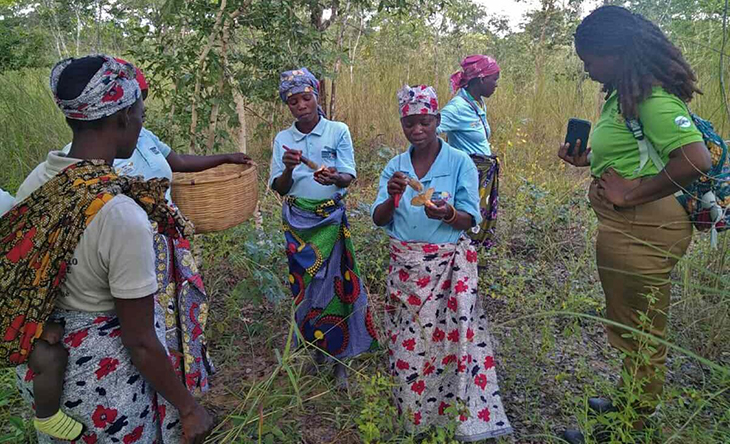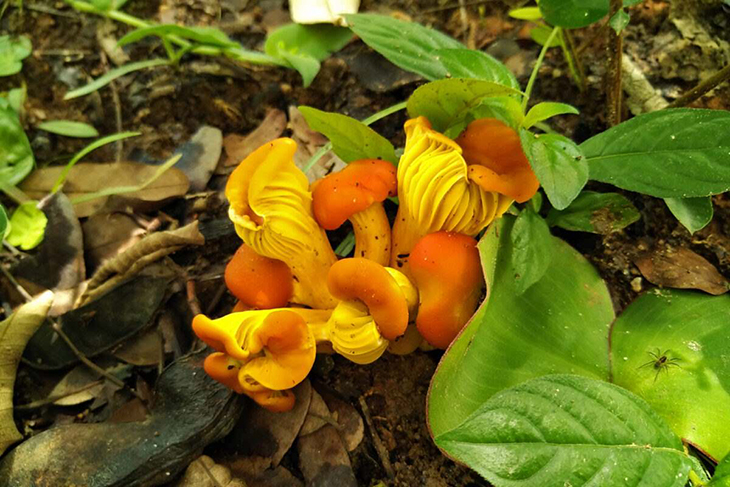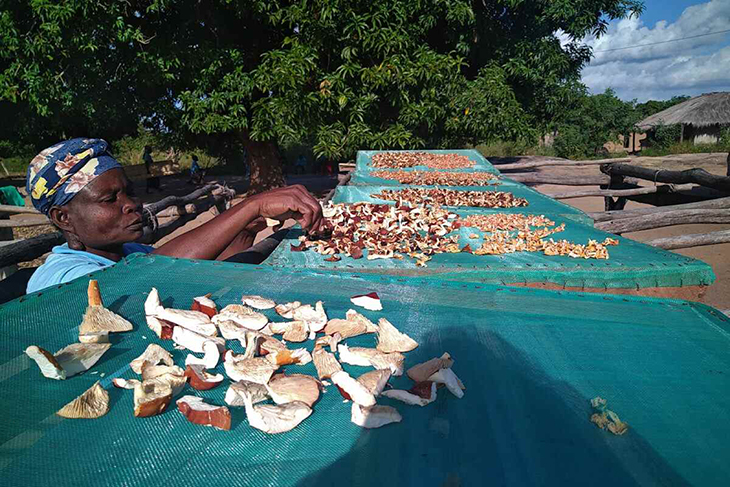
Indigenous communities in Mozambique’s Zambezia province, specifically the Lomwé and Macua, have long practiced the traditional harvest of wild mushrooms alongside staples like cassava.
In a groundbreaking effort to protect the forests surrounding Gilé National Park, conservationists are collaborating with hundreds of indigenous women to commercialize the sale of vibrant orange Eyukuli mushrooms (Cantharellus platyphyllus).
The 55,600-hectare (137,400-acre) buffer zone surrounding Gilé National Park serves as the prime location for harvesting these mushrooms during Mozambique’s wet season, spanning from November to April. Post-harvest, the fungi undergo a meticulous process of cleaning, drying, and transportation over 2,000 kilometers (1,200 miles) to Maputo, the capital.
There, they are packaged and marketed under the trade name Supa Mama, marking the first instance of commercializing native Mozambican mushrooms within the country.
Gilé National Park spans 286,000 hectares (707,000 acres) and is predominantly converged in miombo woodlands, hosting crucial tree species like those form the Brachystegia genus. These trees foster mycorrhizal fungi in their roots, aiding nutrient absorption and moisture retention, evident in the diverse fruiting bodies above ground-mushrooms.
Alessandro Fusari, the Mozambique project manager for the François Sommer Foundation–International Foundation for Wildlife Management (FFS-IGF), emphasizes the economic incentive as a key strategy to preserve trees while promoting wild mushroom harvest. Surrounding communities, relying on at least 46 mushroom species for local consumption, have now commercialized five under the project, including Eyukuli, khaduve, and namapele.
Fusari tells Mongabay, “Slowly, the community, especially the women, are learning that keeping the trees standing means having a bigger production of mushrooms. Since they’re starting to see commercial results, more and more avoid cutting trees.”

Supported by the French Development Agency, the project has already entered into its third year. However, the team doesn’t have enough data to see whether it’s truly been a success or not. But, Fusari says, the reduction in tree cutting “is a clear trend that is happening.”
The women are usually the ones who go out to harvest mushrooms around the Gilé while they are already out doing other things, like gathering wood. The initiative involves approximately 900 members from 30 women’s groups situated in the national park’s buffer zone.
While the park is a habitat for diverse wildlife, including reintroduced species like buffalo, wildebeest, and around 50 elephants that were once wiped out due to the 1977-1992 Mozambique civil war, agricultural activities in the buffer zone pose a threat to the miombo woodlands.
Although the work is still ongoing, the park will be getting another 200 buffalo from Marromeu National Reserve, located 350 kilometers (217 miles) to the southwest, to help build its current population of 150.
While mushroom harvesting alone may not address this issue, it forms part of a broader strategy to promote sustainable agriculture and enhance the forest’s value.
Although the designation of Gilé National Park as a full national park restricts the collection of non-timber forest products, including mushrooms and honey, Fusari’s organization is working on a management plan to potentially reopen sustainable access to certain zones by year-end.
The team involves in mushroom collection have received training in sustainable harvesting methods, underscoring the importance of preserving the mycelium and promoting spore dispersal.

The park’s intact miombo woodlands, which offer suitable habitats for various animals, face a threat from shifting agriculture. In the buffer zone along the park’s northern eastern, and southern boundaries, farmers practice a method where they work plots until the soil is depleted, subsequently abandoning them to clear new fields. This practice is causing significant damage to the trees.
“Food security is based on agricultural production, and not on nontimber forest products,” he says.
According to Roelens, relying solely on mushroom harvesting, even for commercial purposed, will not address this issue. Mushrooms are seasonal, and their yields can vary significantly from one year to the next. However, incorporating commercial value into something typically collected for subsistence is part of a broader initiative to promote sustainable agriculture.
Roelens says, “That’s part of the strategy: to make the forest more valuable and preserved; it’s a key step in that direction.” In the buffer zone, honey production is underway, and FFS-IGF is testing a project to cultivate and sell the indigenous snail species known as koropa (Achatina fulica) to local customers.
Honey is also produced in the buffer zone, and FFS-IGF is piloting a project to raise an indigenous species of snail—the koropa (Achatina fulica)—for sale to local buyers.
The transition from a partial game reserve to a full national park has implications for the collection of non-timber forest products, such as mushrooms and honey, from across the landscape. Previously, when the area was a reserve, community members were permitted to enter and harvest these resources. However, its designation as a national park now legally restricts access to anything other than tourism and research.
Fusari suggests a potential workaround. His organization aims to have a new management plan for the park ready by year-end, with the hope of reopening access. Teams involved in mushroom collection have already been trained in sustainable harvesting methods, such as cutting rather than pulling the mushrooms to avoid damaging the mycelium beneath the surface. They also brush dirt of the mushrooms at the collection sites to leave as many spores as possible, and the women carry their harvest home in open baskets to facilitate spore dispersal along the way.
“In this management plan, we will try to insert the possibility to use some nontimber forest products in a sustainable way in certain zones of the park,” he says.
Simultaneously, ongoing research is being conducted to assess the diversity of Gilé’s fungi and align local names with species recognized by science.
Nitidae is actively working to include Gilé’s edible mushrooms in an inventory of African tropical species curated by experts at Belgium’s Meise Botanic Garden. So far, 16 entries have been recorded in the database, marking the first such records from Mozambique.
What are your thoughts? Please comment below and share this news!
True Activist / Report a typo


